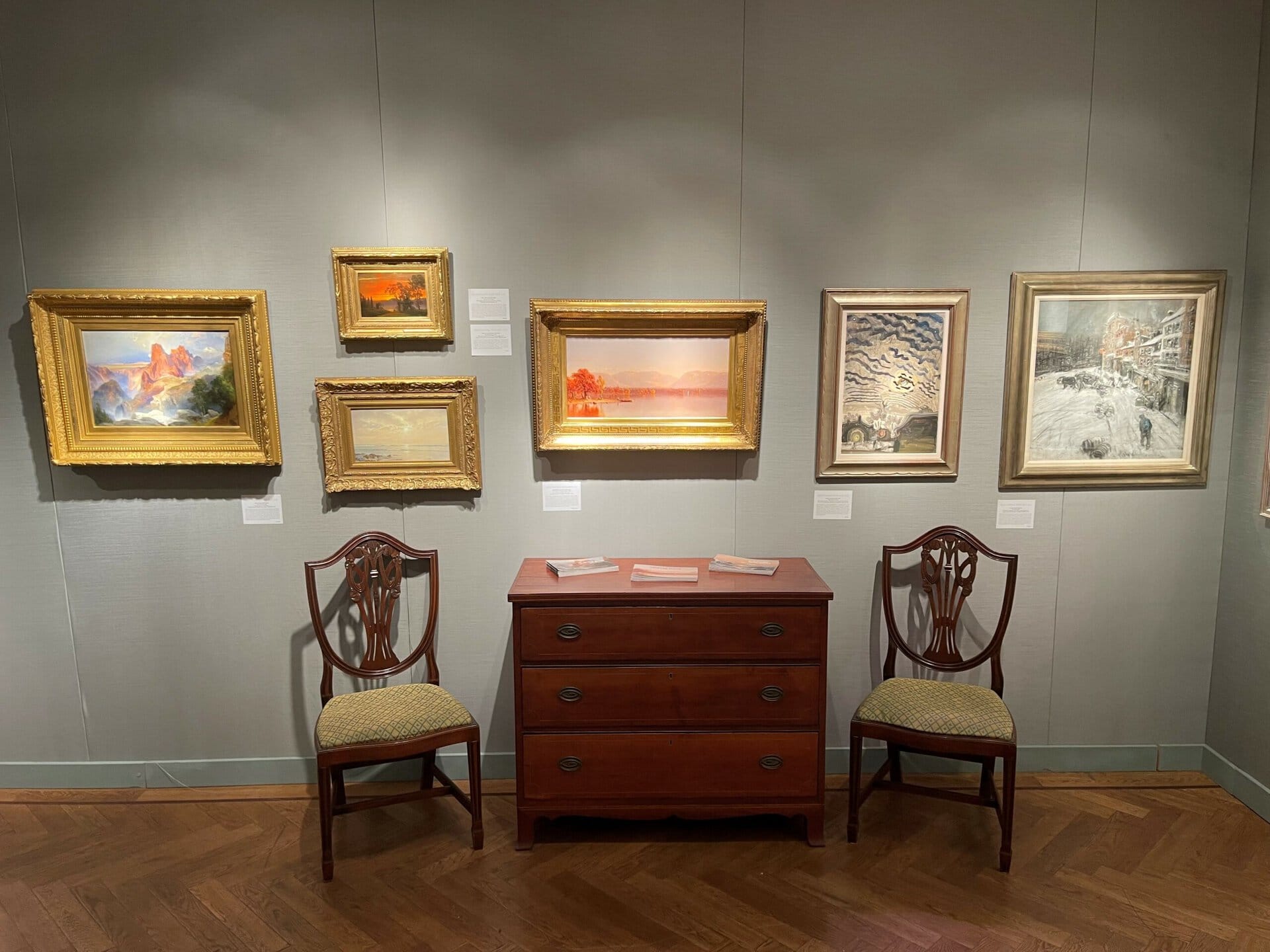A Reason for Optimism

By Louis Salerno
At 9:00 a.m. last Saturday, a critical test of the market for nineteenth-century American paintings and furniture was about to begin. While record prices for post-war and contemporary work frequently make headlines, there was considerable skepticism as to the viability of the market for centuries old work. A disappointing sale would further erode confidence in the nineteenth-century market.
The stakes were especially high because of the extraordinary quality of this single owner sale. It featured the estate of William N. Banks Jr., the amiable collector whose sophisticated connoisseurship was universally respected. There would be no believable excuse to mitigate a poor outcome; the provenance and condition of these lots were exceptional. Given the facts, it was not unreasonable to believe that the fate of the market was in the hands of the well-regarded Brunk Auctions in North Carolina.
The sale faced considerable headwinds: an anemic economy adversely impacted by a worldwide pandemic, travel restrictions and safety requirements that made it difficult or impossible for bidders to inspect the offerings, and much trepidation concerning an impending election. As if all this weren’t enough, items of this caliber had rarely been offered far from New York City and its powerful auction houses.
The auction began in a mostly quiet salesroom with many of Brunk’s staff relaying phone bids from their homes and others submitting via internet. The sale would have to succeed without an enthusiastic audience, which often encourages bidding. This would be yet another handicap to surmount.
As the last lot sold on Saturday evening, news began to spread. I have participated in auctions for nearly half a century and I have never seen such an extraordinary result. There were 330 lots offered, each with a reserve. Every lot sold! A substantial percentage exceeded their high estimates, with many selling for several multiples over! We often read about works that set records at certain auctions. Those occurrences suggest isolated strength, but are not typically predictive of the state of an overall market. What transpired at Brunk, however, is an unambiguous indication of the nineteenth-century market’s integrity and vitality.
Some of the most impressive sales of Hudson River School paintings follow:
Lot 56, Sanford Robinson Gifford (1823–1880), Mt. Washington from the Saco River, 1856
Estimate: $200,000-$300,000
Price realized: $369,000
Lot 61, Asher B. Durand (1796–1886), Franconia Range from the South with Village of South Woodstock, New Hampshire, 1857
Estimate: $300,000-$500,000
Price realized: $516,600
Lot 63, Jasper Francis Cropsey (1823–1900), White Mountain Scenery, 1856
Estimate: $70,000-$90,000
Price realized: $184,500
Lot 92, Thomas Doughty (1791–1856), Hudson River Highlands, 1836
Estimate: $18,000-$22,000
Price realized: $41,820
Lot 94, David Johnson (1827–1908), A Mountain Landscape
Estimate: $12,000-$18,000
Price realized: $44,280
Lot 97, John Frederick Kensett (1816–1872), Beacon Rock, Newport, 1856
Estimate: $250,000-$350,000
Price realized: $664,200
A successful sale is the result of hard work. Brunk’s American art specialist, Nan Zander’s unrelenting enthusiasm and tireless efforts deserve recognition. Perhaps a person with some degree of business acumen would gloss over the accomplishments of competitors, but Nan and her team did a great service to everyone who loves American paintings and furniture. The sale result lends further credence to the well-known movie quote, “If you build it, they will come.” They came by phone and by computer and now we have a reasonable justification for optimism.



